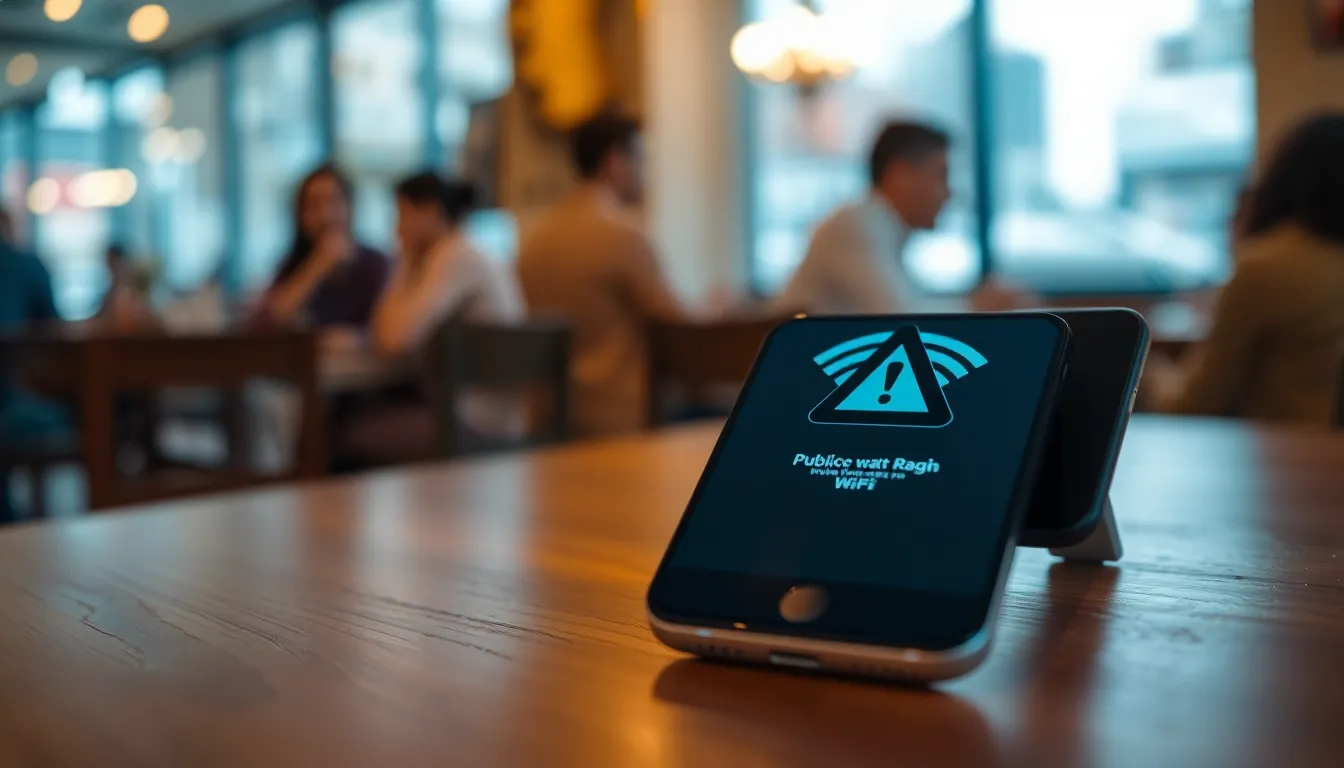Table of Contents
ToggleIn today’s world, smartphones are like mini vaults filled with personal secrets, sensitive data, and maybe a few embarrassing selfies. With hackers lurking around every digital corner, it’s crucial to arm these devices with mobile threat defenses. Think of it as putting a superhero cape on your phone—after all, who wouldn’t want their device to be the Iron Man of cybersecurity?
Overview of Mobile Threat Defenses
Mobile threat defenses protect smartphones from various cyberattacks. They address risks such as malware, phishing, and unauthorized access. Users find value in these defenses as they safeguard critical personal and financial information.
Technologies like mobile device management and application security play vital roles. Mobile device management enables organizations to enforce security policies across devices. Application security ensures that apps undergo thorough testing to identify vulnerabilities.
Employers invest in threat detection systems to monitor device activity continuously. These systems analyze patterns and flag suspicious behavior. For instance, if an unauthorized app attempts access, alerts trigger immediate actions.
VPNs enhance security by encrypting data transmitted between devices and networks. Encryption protects sensitive information from being intercepted by hackers. Additionally, antivirus solutions provide further layers of protection against malicious software.
Regular updates serve as a critical component of any mobile threat defense strategy. Installing the latest software patches helps close security gaps. Businesses encourage users to enable automatic updates for improved protection.
Education on recognizing threats contributes to users’ overall safety. Training programs inform individuals about the latest phishing scams and other tactics employed by cybercriminals. Knowledge equips users to identify suspicious links or emails, reducing the risk of falling victim.
Together, these components create a robust mobile threat defense ecosystem. They establish a proactive approach to cybersecurity, allowing individuals and organizations to navigate the digital landscape securely. Prioritizing mobile threat defenses is essential in an age where smartphones are integral to daily life.
Types of Mobile Threats

Understanding mobile threats is crucial for maintaining cybersecurity. Various types of attacks target mobile devices, each with distinct methods and impacts.
Malware Attacks
Malware attacks encompass malicious software designed to infiltrate devices. Trojans, ransomware, and adware represent some common types of malware. Trojans disguise themselves as legitimate applications, tricking users into downloading them. Ransomware locks users out of their data, demanding payment for access. Adware bombards users with unwanted advertisements, often slowing device performance. Defense against malware includes using antivirus software and regularly updating applications.
Phishing Scams
Phishing scams exploit human psychology to steal sensitive information. Attackers send fraudulent emails or messages that appear legitimate, tricking users into providing login credentials or personal details. A common tactic is using urgency to create fear, encouraging hasty actions. It’s vital to scrutinize links and sender information before clicking. User education helps recognize these scams, reducing vulnerability to attacks.
Network Attacks
Network attacks involve compromising the security of mobile connections. Man-in-the-middle attacks intercept communications, allowing hackers to access sensitive data. Public Wi-Fi networks present significant risks, as they often lack robust security. VPNs can secure data transmissions, providing an additional layer of protection. Awareness of network security helps users make safer connectivity choices.
Mobile Threat Defense Solutions
Mobile threat defense solutions encompass a variety of technologies designed to protect smartphones from cyber threats. These solutions include antivirus software, mobile device management, and VPN services, each playing a crucial role in safeguarding sensitive information.
Antivirus Software
Antivirus software continuously scans devices for malicious applications. It detects and removes threats such as Trojans, ransomware, and adware, which compromise device performance. Regular updates enhance antivirus capabilities against evolving threats. Users rely on this software to provide immediate alerts when a threat is detected. Many reputable antivirus solutions include real-time protection features, ensuring ongoing security.
Mobile Device Management
Mobile device management (MDM) solutions enable organizations to enforce security policies on employee smartphones. These tools allow IT teams to monitor device compliance, manage application installations, and remotely wipe data if a device is lost or stolen. Additionally, MDM facilitates the deployment of security patches promptly, minimizing vulnerabilities. Businesses often implement MDM to maintain control over sensitive data, ensuring protection from unauthorized access.
VPN Services
VPN services create secure tunnels for data transmission between devices and networks. By encrypting data, these services protect against eavesdropping on public Wi-Fi networks. Users connect to the internet through secure servers, masking their IP addresses and enhancing privacy. Many prefer VPNs as they enable safe access to resources while traveling. Regular use of VPNs significantly reduces risk from network attacks, making them a valuable component of mobile threat defense.
Best Practices for Users
Implementing best practices strengthens mobile device security. Users can significantly reduce their risk of cyber threats by following these guidelines.
Regular Updates
Regular updates ensure devices have the latest security enhancements. Users should enable automatic updates for operating systems and applications to simplify this process. Notifications will alert users when updates are available, minimizing the chances of running outdated software. Many vulnerabilities are addressed through these updates, reinforcing devices against new threats. Regularly checking for updates can provide an additional layer of security, ensuring critical patches are installed promptly.
Secure Passwords
Strong passwords play a crucial role in protecting personal information. Users must create unique, complex passwords for different accounts, avoiding easily guessable phrases. Incorporating a mix of uppercase letters, lowercase letters, numbers, and special characters enhances password strength. Password managers can assist in generating and storing these passwords safely. Regularly changing passwords also helps mitigate risks associated with potential breaches.
Awareness and Education
Awareness and education are vital to recognizing mobile threats. Users must familiarize themselves with common cyber threats, such as phishing scams and malware attacks. Participating in training sessions or reading relevant materials helps users stay informed about evolving tactics used by cybercriminals. Identifying suspicious links or unreliable sources becomes easier with knowledge. Staying engaged in security discussions within communities enhances collective awareness and reinforces protection against threats.
Mobile threat defenses are essential for safeguarding personal and sensitive information on smartphones. As cyber threats continue to evolve, staying informed and proactive is crucial. Implementing a combination of antivirus software, mobile device management, and VPN services creates a comprehensive security ecosystem.
Regular software updates and user education further enhance protection against malware and phishing attacks. By fostering awareness and adopting best practices, individuals and organizations can significantly reduce their risk of falling victim to cyber threats. Embracing these strategies ensures that smartphones remain secure in an increasingly connected world.







